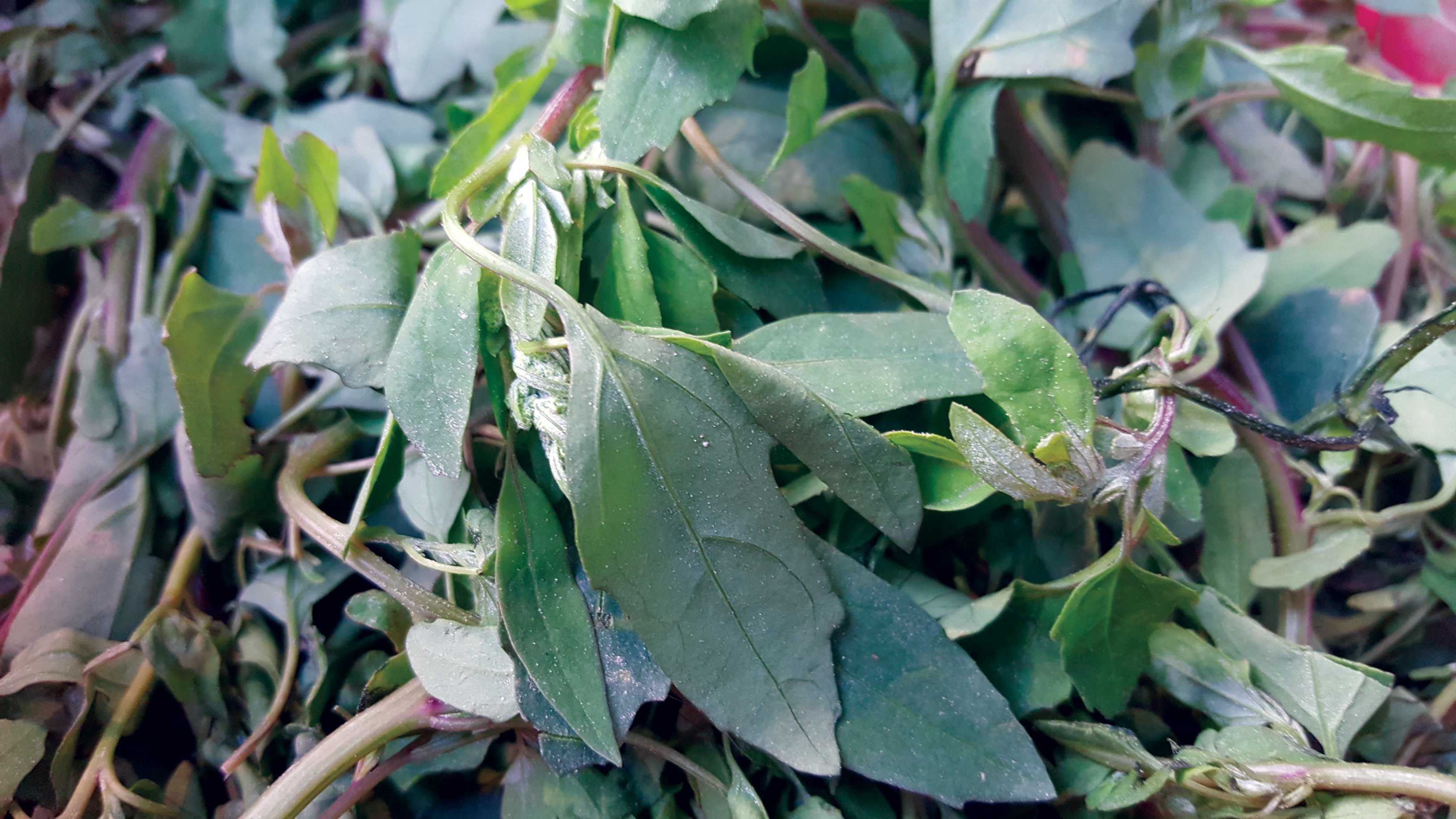With the rising popularity of Newari food everywhere, many have now had the opportunity to taste the day-to-day cuisine of Newar households. One place that gives the best experience of the different dishes is located in Swotha of Patan.

As I walked towards Swotha tole from Mangalbazar, I saw many craft shops and their owners chilling outside, with wide smiles and talks of the elections. Being a Newar, I could understand what they were talking about, and so I couldn’t stop overhearing one shopkeeper describe the khuwa ko yomari that an eatery nearby served. I couldn’t grasp all the details he was sharing, however, I did catch hold of the name of the shop—Nandini Eatery Shop. So, I called up my friends right then and there, and lured them to come have yomaris with the same enthusiasm and with the same confidence as the man who I overhead describing it. I hit the right spot, and my friends agreed to come. While I waited for them to arrive, I sipped a glass of sugary tea at the same place and had a conversation with the lady cook of the eatery. She smiled widely as I asked her some rookie questions about the food. Even though I could recognize some dishes, there were many items that I had never seen or heard of.

My friends arrived after about thirty minutes, and I tried to repeat what the lady had told me about each dish. She sat there smiling and correcting my specifications of the dishes. We were four friends with big appetites, so we chose four different dishes; sekuwa (Nepali style barbeque),choela (marinated and broiled meat), egg bara (lentil patties with egg),and aloo sandheko (marinated spicy potato). They served all the dishes in taparis (green leaf bowls), making the food even more interesting, and the best part was the piro tamatar ko achar (hot tomato pickle) that came with each dish. With a lot of talk about which of us could eat the spiciest food, it took a minute for us to realize our plates were empty.

The next set of food we ordered included bhuttan,(deep fried intestinal parts), kaachi la(partially cooked minced meat), phokso (fried liver of goat), and a round of sekuwa, again. The sekuwa had a very different taste, and was very soft, unlike the ones found elsewhere that are often chewy. The masala (spice) mixture was just about right if you are a lover of spice and sour. One serving also included a handful of fresh spring onions and four-five pieces of sliced onions and two pieces of green chili. The second time, we had it with chiura (beaten rice) that cut through the spices and made it a perfect blend. Besides the sekuwa, what caught my attention was the bhuttan that many of my friends didn’t like. Being a lover of meat, and especially the skin and intestine, bhuttan was a treat for me. The taste of deep fried charcoal meat with the cold piro achar (hot pickle) was heaven. I would recommend that this dish really goes well with beaten rice.
The piro achar, however, wasn’t the only achar they had with them. Near the cook’s seat, there was a closet full of different pickles: mango pickle, chili pickle, orange pickle, radish pickle, and the most popular, the dalle (very hot chili pepper) pickle. While we watched the lady cook all the dishes, our eyes would automatically go to the pickle closet, which only made us, as other customers surely must do, ask for an extra plate of those varieties.

Now, one of the main reasons we went to visit that place was for the yomari. There are two types of yomari, chakku yomari which is made of brown sesame seeds and khuwa yomari. Khuwa ko yomari, especially ,is a very popular dish all over the country. Khuwa is made of milk, which undergoes a lengthy process to be formulated into a soft solid product. It is generally considered as a dessert due to its sweet flavor, however, a whole festival is dedicated to this dish, called Yomari Punhi. The soft khuwa makes up the filling inside a wrapping of rice flour dough. The shape also makes the dish more interesting, as it is in the form of a stupa. It’s cooked by steaming, just the way momos are made.
Nandini Store has a new approach of operating; customers can see what’s cooking right infront of their eyes. Many ask the cook how certain dishes are prepared, while watching her hands move from one tawa (wok) to the other. I must say one needs great skills to manage two stoves, remember the orders, sometimes also serve, and in addition, make the perfect yomari.










